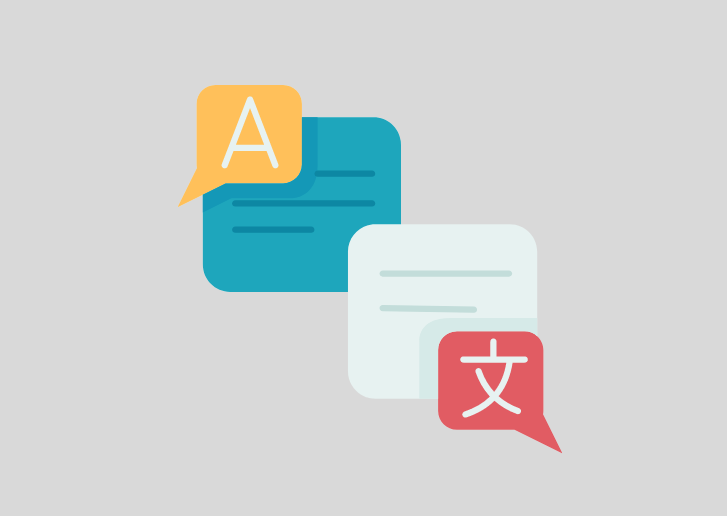Document translation is procedural. All credible providers of document translation services know that you cannot wake up one day and get your documents translated. Instead, you have to follow a simple process.
If you want to translate your documents efficiently and get accurate and relevant outcomes, the Future Group, a language service provider (LSP), advises you to do the following:
Prepare Your Documents
The first step during a document translation process entails the preparation of the documents. Notably, this step is not as simple as it sounds. It has internal milestones that you need to achieve one after the other. What are these milestones?
Identify Your Target Languages

Your target audience determines the number of languages for translating your documents. Notably, a region can have one or more ethnic communities. For this reason, you must identify the number of cultural communities that make up your target audience.
Another important factor to consider when identifying your target languages is that one ethnic community can have several dialect contexts. So, your research does not stop at the identification of the umbrella ethnicity. For this reason, you have to break the universal translation into several sub-languages.
Review Your Documents for Accuracy, Completeness, and Comprehensibility
You must ensure that the documents you will present for translation are accurate, complete, and comprehensive. This move ensures that you do not omit important information that will result in the repetition of the translation process. Remember, any omission or oversight of important information during a translation process translates to more costs and other resources.
To complete this step, liaise with subject matter experts or other informed parties. Such people can assess the relevance of the documents you want to translate and advise you accordingly. You can also opt to have your colleague review the documents.
If you do not manage to review the documents properly, your document translation service provider can request you to make adjustments. Such a request can come when the translation process is ongoing.
However, the best option is to ensure that your documents are whole and ready for translation. Remember, last-minute edits can give rise to extra charges or delays in your project.
Assess Your Project’s Scope

You must know the content you need to translate and the deadline for the translation process. This aspect makes up part of the planning process.
Assessing your project’s scope involves informing the translation team about any special requirements they should address. Such requirements include specific terminologies, measurement conversions, paper size, and the delivery method.
Create a Realistic Deadline
Creating a deadline for a document translation process enables one to keep the process organized. This move determines when to do what during the translation process. Also, the action determines the sequence of activities and processes that can run parallel to each other.
Notably, most translators work on between 2,000 and 2,500 words daily. So, you should assess the total word count and divide it by the productivity rate of your translator to ascertain your deadline.
Remember, your deadline should apply to individual target languages. So, you must ascertain the number of days translators take on one language and multiply the days with the number of your target languages. This move will give you the days the entire translation process will take.
Identify the Final Deliverables’ Format

You must inquire from your translator about the files they use to deliver the final translated content. This move enables you to assess whether the files will be compatible with your operating systems. Also, an inquiry about the compatible files enables one to know how to hand over the documents for translation.
Create a Collaborative Glossary
Creating a glossary requires you to appoint an in-country reviewer who will work with your translator during the creation of the glossary. A glossary enables you to come up with specific, technical terminologies before the translation process begins.
During the development of the glossary, the first step is to select the terms and translate them. The second step is to review the terms, make suggestions, and make the necessary adjustments. Lastly, the process ends with the approval of the translated terms. Remember, the glossary development process can take two to three rounds before the final approval involves both parties.
One of the benefits of creating a glossary is that the process makes the translation process smooth. The glossary development process also improves the consistency of the translation process.
Create a Budget

The document translation process comes at a cost. The pricing depends on the scope of work that the translators will cover. Alternatively, the pricing process can depend on the number of words the translated content will have. Other factors determining the price of the translation process include the technical nature of the content, the number of languages, and the project management approach.
Hand over the Content for Translation
After preparing your documents, hand them over for translation. However, you have to assess the credibility of your translator first. If they can provide high-quality outcomes within the stipulated time and budget, engage them.
A question arises about what happens when you give out your documents for translation. Notably, the translation process comprises several milestones as follows:
Scoping Out the Content for Translation

When you give out your documents for translation, the translator gets the feel of the content first. This move enables the translator to identify the subject matter, the writing style, volume, and complexity. Notably, the editor can opt to skim through the content instead of reading the entire content.
The scoping out stage also enables a translator to identify the terms that require researching for their meaning. Also, this stage determines whether the translator will conduct preliminary research to understand the content.
Initial Translation
The next step entails the initial translation, whereby the translator works on 5 to 10 words at a time. Each chunk of words a translator chooses has a unique and complete meaning. Also, the size of the chunk depends on the short-term memory of the translator. Ideally, a chunk with more than ten words can be difficult to remember.
Sometimes, some sentences can be longer than the ideal translation chunk of words. In such an instance, a translator must break long sentences into shorter ones.
Notably, translating too short chunks of words can result in unnatural or unclear translated content. On the other hand, working with too long chunks of words increases the chances of the omission of some meanings. So, a translator must ensure that the selected size will give rise to high-quality translated content.
A question arises about how translators carry out the initial translation. To answer this question, translators break this stage into smaller parts as follows:
To begin with, the translator reads to understand the text as it appears on the source document.
Next, the translator memorizes the meaning of the source text in their mind.
The next step is to select the ideal vocabulary from the target language to match the meaning of the source document text.
The next step is to assess the grammatical structure of the vocabulary.
The other step is to compose the message in the target language.
Lastly, the translator assesses whether the message reads as naturally as possible.
Accuracy Review
The next step is to compare the translated content with the source document. This move aims at identifying any omitted or misinterpreted content. Also, the accuracy review step enables some translators to identify and adjust any wording that is irrelevant or unnatural.
Taking a Break

The next step during the translation process after the accuracy review is to take a break. A translator has to take a few hours break. If possible, a translator can take an overnight break. The main objective of taking a break is to clear the mind in readiness for the fifth and final translation step.
What can happen if a translator does not take a break? The translation process is a demanding task that involves the use of mind judgment. When the mind of a translator gets tired, they can fail to focus on the content they are translating. In return, they can rush over the translation process and fail to notice errors. So, taking a break is an important part of the translation process.
Fine-Tuning the Translated Content
The final step involves re-reading the translated content. During this step, the translator does not refer to the source document. Rather, they re-read the translated content to assess the expression quality. If the translator notices some off-content, they make adjustments to improve the quality of the translated content.
The Bottom Line

Preparing your documents contributes significantly to the quality of the resultant translated content. For this reason, never underestimate the power of document preparation. This stage forms the foundation of the entire translation process.
Regarding the actual translation, most trained translators follow the process as it is. On the other hand, untrained professionals may mix up the steps even though they will do a translation exercise that closely relates to the discussed one.
Overall, understanding the translation process helps one assess the project’s completion. Without this knowledge, it is not possible to track the process.


